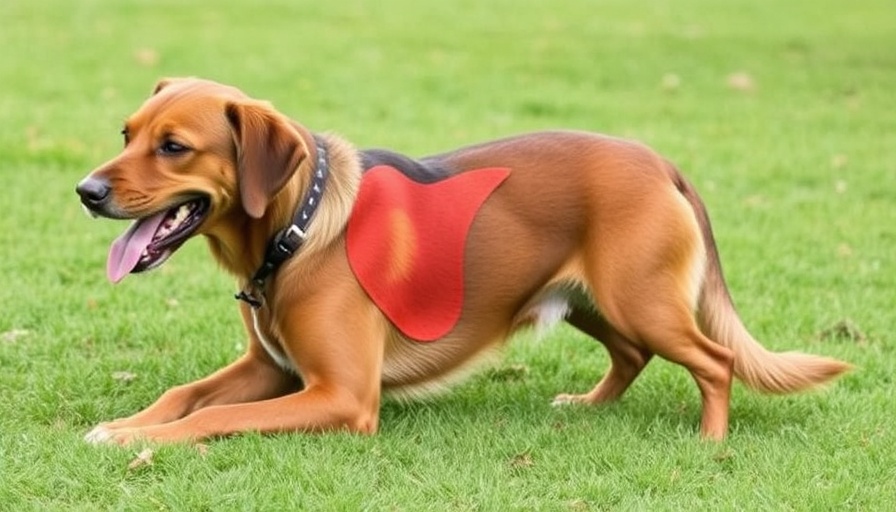
Understanding Stage 4 IVDD: What It Means for Your Dog
When your beloved dog is diagnosed with Stage 4 Intervertebral Disc Disease (IVDD), it can be a distressing moment. Yet, this comprehensive guide aims to demystify Stage 4 IVDD, leading you through its implications and how to navigate this challenging condition.
What is Stage 4 IVDD in Dogs?
Stage 4 IVDD signifies a serious condition where the cushioning discs between vertebrae either slip or degenerate, causing pressure on the spinal cord. For dogs, this often results in loss of mobility in their hind legs while still retaining some sensation in their limbs. Unlike Stage 5 IVDD, where there is a total loss of feeling, dogs in Stage 4 can still react to touch and even painful stimuli.
Why Does Stage 4 IVDD Occur?
IVDD develops due to various factors, commonly seen in small, long-bodied breeds such as Dachshunds, Beagles, and Corgis. Aging and obesity further increase the risks.
Common triggers include a sudden jump or slip, which can jolt a disc out of its optimal position, leading to debilitating nerve damage. While not all incidents are preventable, promoting a healthy weight and reducing high jumps from furniture can help mitigate risks.
Spotting the Signs of Stage 4 IVDD
Early detection and intervention are critical for improving outcomes in dogs suffering from Stage 4 IVDD. Key signs to watch for include:
- Sudden hind leg weakness
- Dragging of back paws
- Crying when handled or touched
- Stiffness in the back or noticeable muscle spasms
- Incontinence issues
If you observe any of these symptoms, it is essential to keep your dog calm and seek veterinary care immediately. Prompt attention can significantly influence recovery potential.
The Diagnostic Journey: How Vets Identify Stage 4 IVDD
Veterinarians begin by conducting a thorough physical examination, assessing your dog’s responsiveness and pain thresholds. Diagnostic imaging—like X-rays or MRIs—may be used to pinpoint the exact location and severity of disc herniation. These continued advances in veterinary medicine help ensure tailored treatment plans are developed swiftly.
Treatment Options: Navigating Recovery for Your Dog
Treatment for Stage 4 IVDD predominantly falls into two categories: non-surgical management and surgical intervention.
Non-Surgical Care: A Restorative Approach
If your veterinarian determines surgery isn’t immediately necessary, a strict period of rest is vital, often necessitating your dog to be confined to a crate or small pen for several weeks. Pain relief medications and anti-inflammatories can help manage discomfort, while bladder management may be required for those struggling to urinate independently.
Gentle rehabilitation therapy can be introduced once the acute phase has subsided, promoting mobility and strength in the hind limbs.
Surgery: A Critical Intervention
Many dogs in Stage 4 IVDD necessitate surgical intervention to relieve the pressure on the spinal cord. The ideal timeframe for surgical success is within 48 hours of losing mobility. The removed disc material can alleviate pain and restore some function.
Post-surgery, dogs require a structured rehabilitation program to support recovery and adapt to any physical limitations.
Looking Forward: Recovery Time and Prognosis
Recovery time varies significantly among dogs, ranging from 4 to 12 weeks, depending on the treatment approach and individual response. Regular follow-ups with your veterinarian will be crucial in tracking your dog’s progress and adjusting recovery protocols as needed.
While Stage 4 IVDD presents unique challenges, with proper care and a tailored recovery strategy, many dogs can achieve significant improvements in mobility and quality of life.
Conclusion: Advocating for Your Pup’s Health and Recovery
Understanding Stage 4 IVDD not only helps you navigate the complexities of your pet’s condition, but also empowers you to take an active role in their care. As a dedicated advocate for your furry friend, make use of available resources, and stay educated about their needs. Holistic care approaches, including consultations with pet nutritionists or rehab specialists, can enrich your dog’s recovery journey.
Reach out to your veterinary team for guidance and always prioritize the emotional well-being of your pet, as these challenges can be as draining for them as they are for you.
For those working within the veterinary field or holistic care sectors, staying informed about the latest treatments, rehabilitation techniques, and support systems available for IVDD is essential in forging a supportive network for affected pets.
 Add Row
Add Row  Add
Add 




Write A Comment